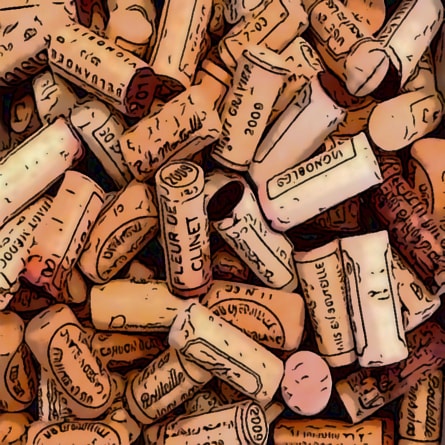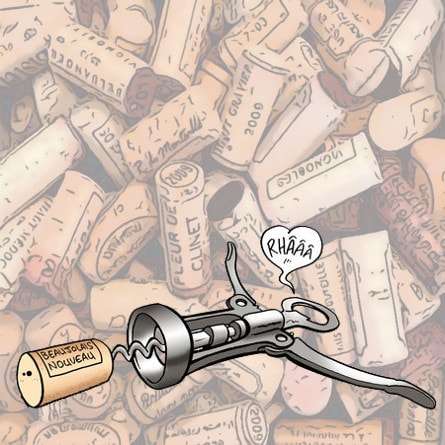Various corks and stoppers
C
ork is commonly used to seal wine, champagne, cider or beer bottles because it is waterproof, flexible and porous to air. Out of the 16 billion bottle stoppers produced each year, 80% are made of cork; but screw caps and synthetic corks are taking more and more space in the world market.
If its use was already known to the Greeks who obstructed amphorae with cork covered with plaster or resin; the cork stopper would gradually slip away in the middle ages to the benefit of the fabric-covered wood dowel, only to reappear around 1728 on bottles of champagne… the first patent for a corkscrew, accessory rendered necessary to open so-sealed bottles, was filed in 1795 by Samuel Henshall.
Being both lung and filter, the cork would allow gas flow between wine and the external environment and by so ensure micro-breathing for the wine. According to a popular myth, the way for this exchange to be well balanced or not was supposed to let the wine age well or badly furthermore a short plug would activate aging while a very long and premium plug would allow for great wines to keep longer…
"Rubbish" reply oenologist Émile Peynaud and Professor Pascal Ribereau-Gayon, "the wine does not require this micro-breathing to evolve". Their works of the 1960s showed that the wine evolves from the oxygen it contains (the one dissolved in its alcohol) and the other contained in the stripped chamber (volume of air between wine and cork)
On the other hand, the dark side of the cork stopper is that it contains haloanisoles - including the dreaded TCA 2,4,6-trichloroanisole - that are able to contaminate and oxidise the wine up to affect it with an unpleasant oil taste in less than 18 months.
Hence the increasingly frequent use of synthetic corks that avoid these problems while respecting the oxygen permeability, or even screw caps or crown-capsules like for beerbottles. The first capsules were sealed with a cork washer; today there are synthetic seals… but since these capsules are most often used to seal wine to be drunk at a young stage, contamination with TCA would in any event had not enough time to occur!
On the other hand, the dark side of the cork stopper is that it contains haloanisoles - including the dreaded TCA 2,4,6-trichloroanisole - that are able to contaminate and oxidise the wine up to affect it with an unpleasant oil taste in less than 18 months.




